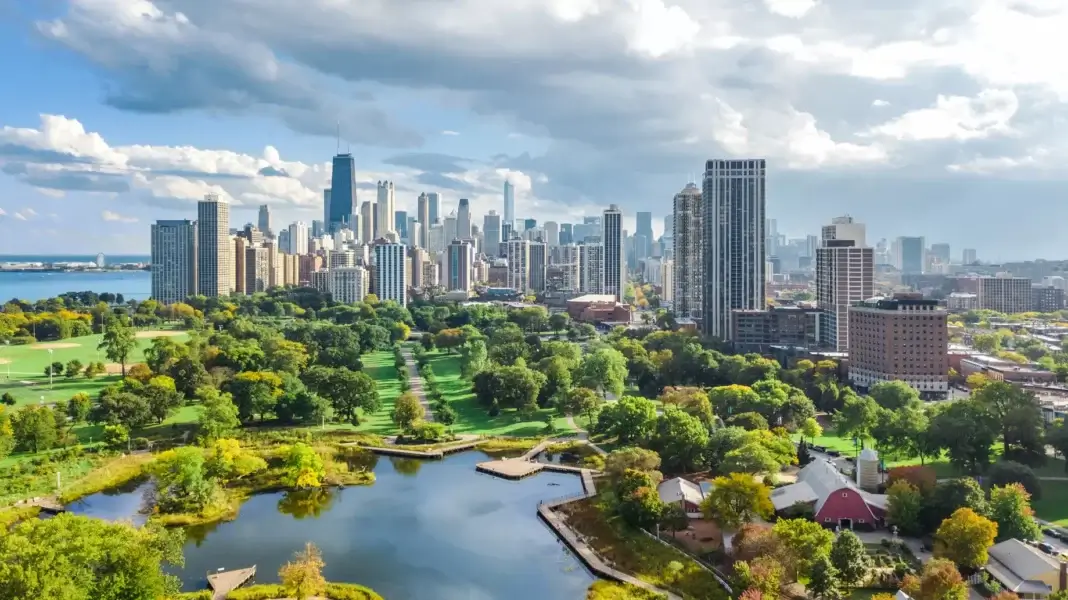Sustainable Cities: How to Build Eco-Friendly Green Spaces
By Jane Marsh
City dwellers enjoy the hustle and bustle of urban life. However, they also like to escape to natural areas for relaxation and recreation. Green spaces are as beneficial for people’s mental and physical health as they are for the environment. They improve air quality and soil retention, reduce ambient temperatures, and restore habitat for local wildlife.
Green spaces aren’t limited to parks. Local governments can build sustainable cities through selective plantings and eco-friendly design.
What Defines a Green Space?
Green spaces are vegetated areas within a city’s limits, including parks, community gardens, garden beds, rooftop gardens, and vertical plantings. They deliver positive mental and physical benefits to residents and enhance the local environment.
According to the Trust for Public Land, there are 2 million acres of parks across 100 of the most populated metropolitan areas in the United States. While most of this acreage is in Anchorage, Alaska, other cities have implemented ample green space. For example, 44% of Fremont, California, is green, while parks also occupy 27% of Chesapeake, Virginia, and Scottsdale, Arizona.
The Societal and Environmental Benefits of Green Spaces
The societal and environmental benefits of green spaces are difficult to overlook. In one study of city NatureScores — a tool measuring the quantity and quality of urban nature for positive health outcomes — scores over 40 were associated with a 51% and 63% decline in depression and bipolar disorder, respectively.
Green space also promotes active lifestyles through recreation, which reduces cholesterol levels, hypertension, obesity, and other risk factors for cardiovascular disease. Likewise, community gardens encourage healthier eating habits and enable nutrition education and programs. As a result, communities spend less on health care.
Investing in green infrastructure also improves ecological health. Increased vegetation provides a habitat for birds, insects, reptiles, and small mammals, some of which are essential pollinators. Most apparent is how these green city designs connect natural areas and water for safer wildlife movement.
Meanwhile, urban trees remove carbon dioxide from the air and store it within tree tissues, offsetting the effects of climate change. This helps improve air quality by reducing greenhouse gases and reversing the urban heat island effect.
Plants also absorb and filter stormwater runoff and prevent erosion. For instance, asphalt and concrete release harmful pollutants, which stream into lakes, beaches, and other bodies of water during precipitation. Innovative green space designs can capture the polluted water before it leaches into the environment. City planners can even reconfigure city sewage systems to prevent overflows.
How to Build Green Spaces in Urban Communities
City officials and urban planners must strategically plan and implement green infrastructure to improve the environment and residents’ quality of life. They must overcome challenges and stipulations to build eco-friendly green spaces successfully. These considerations are crucial throughout each step.
Identify Ideal Locations
Urban planners must analyze ideal sites before building green spaces on any vacant lot. Although the qualities of such environments are objective and subject to location and climate, officials must consider tree canopies, walking paths, seating, the emotional connection it’ll evoke, and accessibility. Further, is it close to a busy street, and will it satisfy nearby citizens?
It is equally important to consider areas other than parks, such as abandoned parking lots and rooftop gardens. Green roofs can reduce indoor temperatures by 70% — a 15-degree Celsius or 59-degree Fahrenheit reduction. This can result in building energy savings of 10%-60%, correspondingly.
Select Suitable Plants
Native plants already acclimate to the region’s climate and deliver a sustainable option for urban green spaces. Some describe them as occurring before European settlement, comprising trees, herbs, ferns, grasses, wildflowers, shrubs, and other plants.
These plants provide crucial habitat and food for local pollinators and wildlife and require little maintenance. According to one study, the prevalence of urban pollinators is five to six times lower than in rural environments due to the altered landscape. However, they are vital to plant vitality and a sufficient food supply.
City officials will find native plants easier to care for since they require few pesticide and fertilizer treatments. This means fewer toxins are released into the surrounding neighborhoods. Likewise, local species do not require as much irrigation as nonnative vegetation, helping cities reduce water consumption.
Integrate Proper Maintenance
Adding a layer of organic fertilizer may be necessary to establish green space. Although experts recommend applying fertilizer four to five times a year, the best results occur when doing so in early spring using a drop spreader over a large lawn. Using fertilizers sparingly — even organic treatments — is essential, as they can burn the grass and pose a risk to wildlife and humans.
Maintenance crews should also prune trees and plants as necessary to ensure optimal health and shape. While light pruning—such as removing dead, broken, or weak branches — is acceptable any time of the year, it is best to trim more heavily in late summer or early spring. Professionals often follow the “one-third rule,” which says one shouldn’t remove more than one-third of a plant’s crown in a year.
Other maintenance to keep up with would include regular watering, especially during droughts, removing weeds, and monitoring the area for pests. However, an eco-friendly approach to pest control is more beneficial to the surrounding environment and community.
One Seed at a Time: Tomorrow’s Green Cities Start Today
Natural areas may seem like a diamond in the rough among skyscrapers and traffic jams. However, by integrating green spaces, urban planners can create healthier, more ecologically friendly, and climate-resilient cities. Communities will flourish as governments take small steps toward sustainability to create a greener tomorrow. More importantly, their efforts can inspire others to contribute to an eco-friendly society for future generations.
Article by Jane Marsh
Jane works as an environmental and energy writer. She is also the founder and editor-in-chief of Environment.co
